
The Crown Jewels of the United Kingdom, originally the Crown Jewels of England, are a collection of royal ceremonial objects kept in the Jewel House at the Tower of London, which include the coronation regalia and vestments worn by British monarchs.
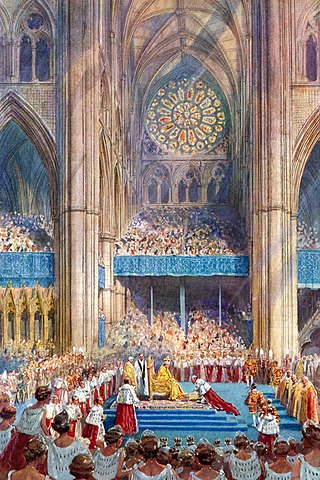
The coronation of the monarch of the United Kingdom is an initiation ceremony in which they are formally invested with regalia and crowned at Westminster Abbey. It corresponds to the coronations that formerly took place in other European monarchies, which have all abandoned coronations in favour of inauguration or enthronement ceremonies. A coronation is a symbolic formality and does not signify the official beginning of the monarch's reign; de jure and de facto their reign commences from the moment of the preceding monarch's death, maintaining legal continuity of the monarchy.

The Honourable The King's Champion is an honorary and hereditary office in the Royal Household of the British sovereign. The champion's original role at the coronation of a British monarch was to challenge anyone who contested the new monarch's entitlement to the throne to trial by combat. Although this function was last enacted at the coronation of George IV in 1821, the office continues to descend through the Dymoke family.

The coronation of Elizabeth II as queen of the United Kingdom and the other Commonwealth realms took place on 2 June 1953 at Westminster Abbey in London. She acceded to the throne at the age of 25 upon the death of her father, George VI, on 6 February 1952, being proclaimed queen by her privy and executive councils shortly afterwards. The coronation was held more than one year later because of the tradition of allowing an appropriate length of time to pass after a monarch dies. It also gave the planning committees adequate time to make preparations for the ceremony. During the service, Elizabeth took an oath, was anointed with holy oil, was invested with robes and regalia, and was crowned Queen of the United Kingdom, Canada, Australia, New Zealand, South Africa, Pakistan, and Ceylon.

In the United Kingdom state funerals are usually reserved for monarchs. The most recent was the state funeral of Queen Elizabeth II on 19 September 2022.

The Coronation of Edward VII, also released as Reproduction, Coronation Ceremonies, King Edward VII and as Coronation of King Edward, is a 1902 short silent film directed by Georges Méliès and produced by Charles Urban. The film is a staged simulation of the coronation of King Edward VII and Queen Alexandra, produced in advance of the actual coronation for release on the same day.
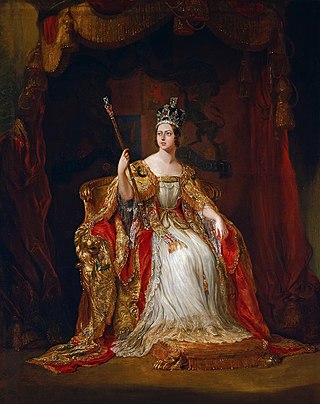
The coronation of Victoria as Queen of the United Kingdom took place on Thursday, 28 June 1838, just over a year after she succeeded to the throne of the United Kingdom at the age of 18. The ceremony was held in Westminster Abbey after a public procession through the streets from Buckingham Palace, to which the Queen returned later as part of a second procession.

The coronation of George VI and his wife, Elizabeth, as king and queen of the United Kingdom and the Dominions of the British Commonwealth, Emperor and Empress consort of India took place at Westminster Abbey, London, on Wednesday 12 May 1937. George VI ascended the throne upon the abdication of his brother, Edward VIII, on 11 December 1936, three days before his 41st birthday. Edward's coronation had been planned for 12 May and it was decided to continue with his brother and sister-in-law's coronation on the same date.
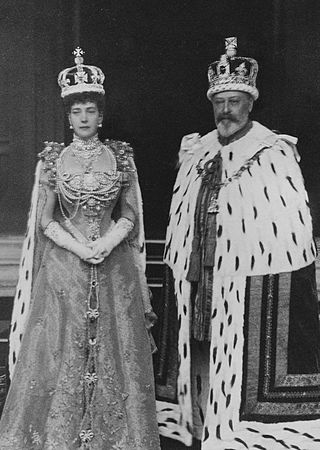
The coronation of Edward VII and his wife, Alexandra, as king and queen of the United Kingdom and the British Dominions took place at Westminster Abbey, London, on 9 August 1902. Originally scheduled for 26 June of that year, the ceremony had been postponed at very short notice, because the King had been taken ill with an abdominal abscess that required immediate surgery. In contrast to the coronation of Queen Victoria, Edward's predecessor, some 64 years earlier, Edward and Alexandra's coronation had been carefully planned as a spectacle reflecting the influence and culture of the British Empire, then at the height of its power, but also as a meaningful religious occasion.

The coronation of Elizabeth I as Queen of England and Ireland took place at Westminster Abbey, London, on 15 January 1559. Elizabeth I had ascended the throne at the age of 25 upon the death of her half-sister, Mary I, on 17 November 1558. Mary had reversed the Protestant Reformation which had been started by her two predecessors, so this was the last coronation in Great Britain to be conducted under the authority of the Catholic Church. Historians view Elizabeth's coronation as a statement of her intention to restore England to Protestantism, but to allow the continuation of some Catholic customs, a compromise known as the Elizabethan Settlement.

The coronation of George V and his wife, Mary, as king and queen of the United Kingdom and the British Dominions took place at Westminster Abbey, London, on Thursday 22 June 1911. This was the second of four such events held during the 20th century and the last to be attended by royal representatives of the great continental European empires.
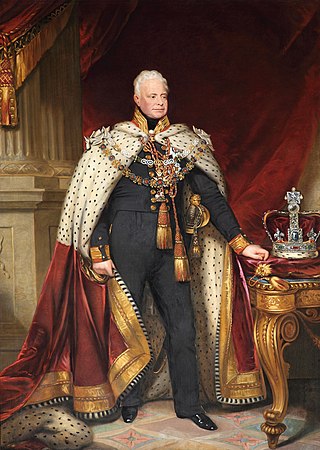
The coronation of William IV and his wife, Adelaide, as king and queen of the United Kingdom took place on Thursday, 8 September 1831, over fourteen months after he succeeded to the throne of the United Kingdom at the age of 64, the oldest person to assume the throne until Charles III in 2022. The ceremony was held in Westminster Abbey after a public procession through the streets from St James's Palace, to which the King and Queen returned later as part of a second procession.

The coronation of George IV as King of the United Kingdom took place at Westminster Abbey, London, on 19 July 1821. Originally scheduled for 1 August of the previous year, the ceremony had been postponed due to the parliamentary proceedings of George's estranged wife, Caroline of Brunswick; because these failed to deprive Queen Caroline of her titles and obtain a divorce from the King, she was excluded from the ceremony. In accordance with George's lavish personal tastes, the coronation was the most extravagant ever staged and a number of the traditional elements of the ceremonial were conducted for the last time.

The coronation of Anne Boleyn as Queen of England took place at Westminster Abbey, London, England, on 1 June 1533. The new queen was King Henry VIII's second wife, following the annulment of his first marriage to Catherine of Aragon.
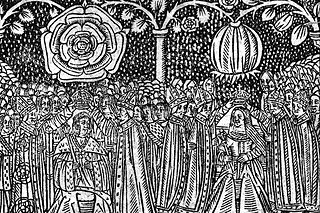
The coronation of Henry VIII and his wife Catherine as King and Queen of England took place at Westminster Abbey, London, on 24 June 1509. Henry ascended the throne two months prior, following the death of King Henry VII on 21 April, and Catherine became his wife and queen on 11 June. The ceremony was presided over by William Warham, the incumbent Archbishop of Canterbury, and organized by Lady Margaret Beaufort, the King's grandmother.

The coronation of James I and his wife Anne as King and Queen of England and Ireland was held on 25 July 1603 at Westminster Abbey. James had reigned as King James VI of Scotland since 1567. Anne was anointed and consecrated with prayers alluding to Esther, the Wise Virgins, and other Biblical heroines. It was the first coronation to be conducted in English instead of Latin. A planned ceremonial Royal Entry to London was deferred until 15 March 1604.

The coronation of Charles III and his wife, Camilla, as king and queen of the United Kingdom and the other Commonwealth realms, took place on Saturday, 6 May 2023 at Westminster Abbey. Charles acceded to the throne on 8 September 2022 upon the death of his mother, Elizabeth II.
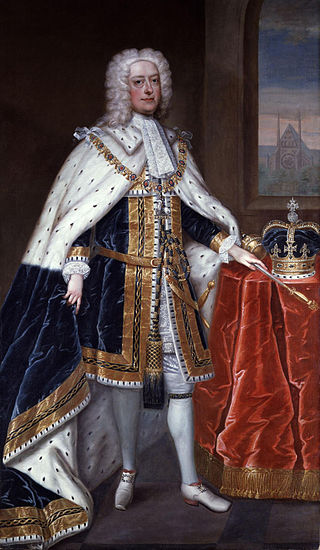
The coronation of George II and his wife Caroline as King and Queen of Great Britain and Ireland took place at Westminster Abbey, London, on 11/22 October 1727. For the coronation, George Frideric Handel was commissioned to write four new coronation anthems, one of which, Zadok the Priest, has been sung at British coronations ever since. The coronation followed a procession to the abbey.

The coronation of Edward VI as King of England and Ireland took place at Westminster Abbey, London, on 20 February 1547. Edward ascended the throne following the death of King Henry VIII.
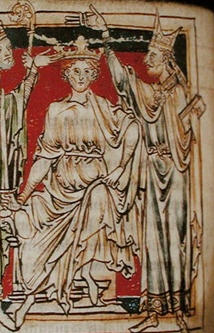
The coronation of William the Conqueror as King of England took place at Westminster Abbey, London, on 25 December 1066, following the Norman Conquest of England. It was the first coronation which can be proved to have been held at Westminster. In May 1068, William's wife, Matilda of Flanders, was also crowned at the abbey.




























